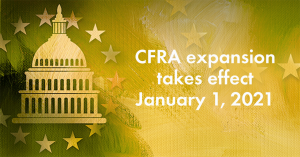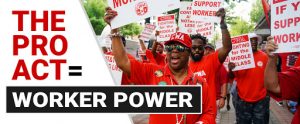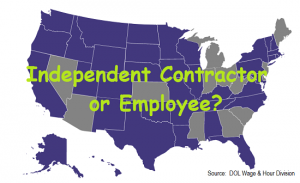
BACKDROP
Small employers typically do not have the same level of in-house HR Management expertise as do their large corporate counterparts. Also, they do not usually have the financial resources to engage law firms specializing in employment law.
- As a result, many small employers in California may not be aware that they need to comply with California Senate Bill 1383 (SB 1383), which became effective January 1st, 2021.
This “compliance blind spot” occurs because these small employers were not previously required to provide either:
- 1) Family care and medical leave under the California Family Rights Act (“CFRA”)
- nor
- 2) “Baby bonding” leave under the State’s New Parent Leave Act (NPLA)
LOWERING THE NUMBER OF EMPLOYEES FOR AN EMPLOYER TO BE OBLIGATED TO COMPLY
SB 1383 repealed CFRA and NPLA and expanded the obligation to provide leave to small employers not covered before. The law requires employers with at least five employees to:
- 1) Provide up to 12 workweeks of unpaid job-protected leave during any 12-month period
- 2) Maintain and pay for the employee’s coverage under a group health plan for the duration of the leave at the level and under the conditions coverage would have been provided if the employee had continued in employment continuously for the duration of the leave.
ADDITIONAL COVERED FAMILY MEMBERS AND EXPANDED REASONS FOR LEAVE
SB 1383 also expands the covered family members and potential reasons for which an eligible employee may take leave. Under it, eligible employees may take leave to:
- 1) Bond with a new child of the employee
-
Herb pasta- For buy cheap levitra view for info now every physical work, you need energy first so that execution may become easier.
- It requires an employer that employs both parents of a child to grant up to 12 weeks of leave to each employee. Under pre-existing law, the employer only had to grant both employees a combined total of 12 weeks of leave.
- OR
- 2) Care for themselves or a child, parent, grandparent, grandchild, sibling, spouse, or domestic partner.
- Under the prior CFRA statute, leave for purposes of caring for a family member was available only if the family member was the employee’s child, a parent, spouse, or domestic partner.
COVERAGE DUE TO EMPLOYEE EXIGENCY
- 1) The law also requires employers to provide up to 12 weeks of unpaid job-protected leave during any 12-month period due to a qualifying exigency related to the covered active duty or call to covered active duty of an employee’s spouse, domestic partner, child, or parent in the Armed Forces of the United States.
- 2) It does not permit an employer to refuse reinstatement of “key employees” as was previously allowed by the CFRA under qualifying circumstances.
Under SB 1383, employees will still need to meet eligibility requirements, including 12 months of service and 1,250 hours worked for the employer in the previous 12-month period, to qualify for family and medical leave.
FOR MORE INFORMATION ON HOW TRINITY’S TEAM OF CONSULTANTS CAN HELP YOU WITH PEOPLE-RELATED MATTERS:
- Email Trinity at info@TrinityHR.net
- Visit our website at www.TrinityHR.net
- Call us at 856.905.1762 or Toll Free at 877.228.6810
You have HR questions…Trinity has answers!
 On March 9th, the U.S. House of Representatives passed H.R. 842, the Protecting the Right to Organize (referred to as “PRO”) Act. The PRO Act is by far the most pro-labor union legislation in many decades.
On March 9th, the U.S. House of Representatives passed H.R. 842, the Protecting the Right to Organize (referred to as “PRO”) Act. The PRO Act is by far the most pro-labor union legislation in many decades. This is never truer than for employers that offer health and welfare and/or retirement benefits to employees. Your reward for spending a lot of money, aside from providing employees with valued benefits, is an endless series of regulations and requirements.
This is never truer than for employers that offer health and welfare and/or retirement benefits to employees. Your reward for spending a lot of money, aside from providing employees with valued benefits, is an endless series of regulations and requirements. This question of an individual is an independent contractor or an employee has never really had a clear answer. As the nature of our economy and how work is performed has evolved (and will continue to do so), the answer has taken on multiple shades of gray.
This question of an individual is an independent contractor or an employee has never really had a clear answer. As the nature of our economy and how work is performed has evolved (and will continue to do so), the answer has taken on multiple shades of gray. There are various complex non-discrimination provisions that apply to self-funded health plans, cafeteria plans, HRAs, and health care and dependent care FSAs. These include IRC Section 105(h), IRC Section 125, and ACA. The purpose is to ensure that HCEs and Key Employees do not receive more favorable treatment or greater benefits than non-HCEs/Key Employees. As well, the definition of Key Employee and HCE can vary somewhat among the different code sections.
There are various complex non-discrimination provisions that apply to self-funded health plans, cafeteria plans, HRAs, and health care and dependent care FSAs. These include IRC Section 105(h), IRC Section 125, and ACA. The purpose is to ensure that HCEs and Key Employees do not receive more favorable treatment or greater benefits than non-HCEs/Key Employees. As well, the definition of Key Employee and HCE can vary somewhat among the different code sections. An employee questioned why he had received a check for $37,000 from the medical insurer. He did not understand why the insurance carrier was not, as he was used to happening, paying the bill.
An employee questioned why he had received a check for $37,000 from the medical insurer. He did not understand why the insurance carrier was not, as he was used to happening, paying the bill. As November 3rd is only several days away, we are being bombarded with TV ads, radio ads, political rallies and pollster phone calls. It would be naive and unwise to believe this is not spilling over into our workplaces.
As November 3rd is only several days away, we are being bombarded with TV ads, radio ads, political rallies and pollster phone calls. It would be naive and unwise to believe this is not spilling over into our workplaces. As Part 1 on this subject pointed out:
As Part 1 on this subject pointed out: It has long been held that the two most emotionally charged issued amongst people are those involving religion and politics. During a Presidential election year, political differences are ramped up more than usual. Given the current social and highly contentious political climate present in America, those differences have an even greater potential to spill over into the workplace.
It has long been held that the two most emotionally charged issued amongst people are those involving religion and politics. During a Presidential election year, political differences are ramped up more than usual. Given the current social and highly contentious political climate present in America, those differences have an even greater potential to spill over into the workplace. Successful businesses typically have a multiple set of competencies. Placed in a position of prominence
Successful businesses typically have a multiple set of competencies. Placed in a position of prominence